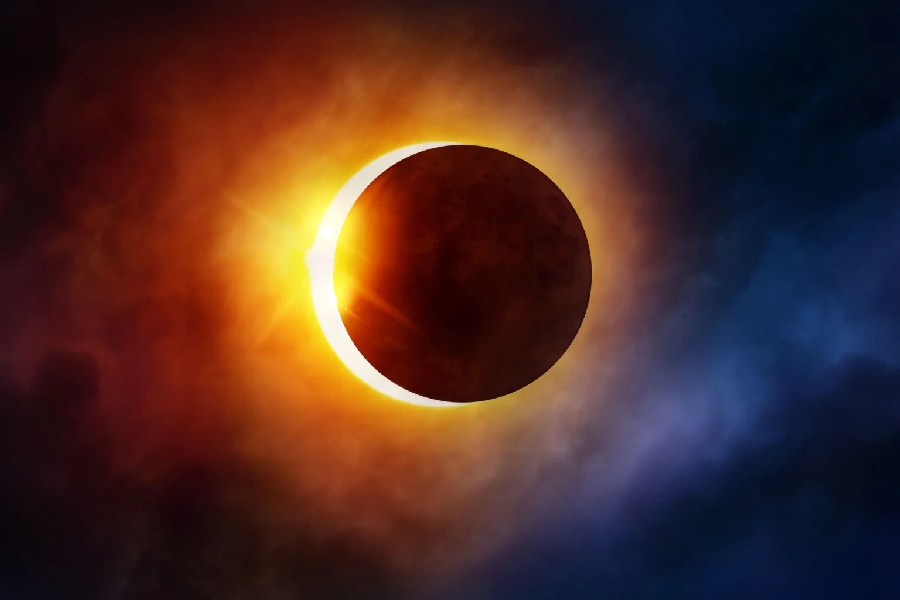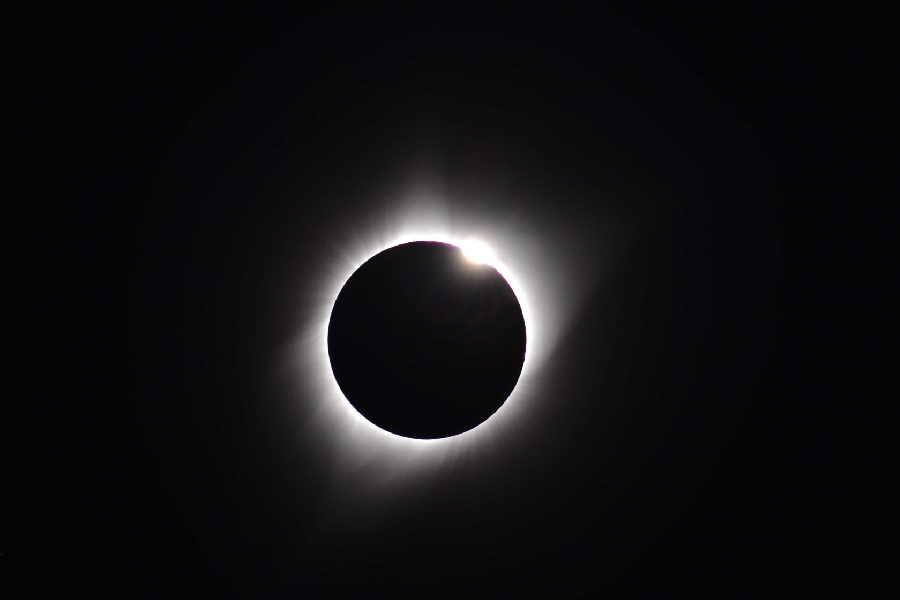Have you ever experienced a day turning into night for a few mysterious minutes? This magical event is caused by the celestial phenomenon called a solar eclipse. But what is solar eclipse?
About once every year and a half, the moon slides directly between the Earth and the sun, blocking our view of the sunlight. This results in a rare and captivating sight – the sun disappearing behind the moon, leading to a few minutes of darkness.
In this article, we will unpack precisely how an eclipse occurs by looking at concepts like lunar cycles, the alignment of the Earth, moon and sun, shadows cast by the moon, and predictable eclipse patterns.
With straightforward visuals depicting the moon’s orbit and eclipse formation, you’ll gain a clear understanding of how these dazzling events transpire, from foundational astronomy principles to experiencing totality and advances in solar science.
Let’s uncover the secrets behind nature’s temporary vanishing sun illusion, known as a solar eclipse. Equipped with new knowledge, you, too, may someday plan to stand in the moon’s shadow and witness the magic of totality during daytime darkness.

What Is Solar Eclipse?
What is solar eclipse and what happens during solar eclipse? A solar eclipse happens when the Moon passes between the Earth and the Sun, blocking all or part of the Sun’s light. It can be partial, total, or annular. During a total solar eclipse, the Moon fully covers the Sun, briefly turning day into night.
In a partial eclipse, only part of the Sun is obscured. An annular eclipse occurs when the Moon covers the center of the Sun, creating a “ring of fire”. Solar eclipses are intriguing celestial events that capture the attention of observers on Earth.
Main Types of Solar Eclipse
Total solar eclipse
A total solar eclipse occurs when the Moon is close enough in its orbit to completely cover and obscure the Sun from view for observers on Earth. This happens when the Moon is precisely aligned between the Earth and Sun while very near the ecliptic plane, fully occluding our host star behind it.
This rare alignment casts a small shadow from the Moon on the Earth’s surface, tracing out a temporary path of darkness visible as a total solar eclipse.
Within this shadow or umbra, a dazzling solar corona becomes visible to the naked eye, creating a magnificent natural display in skies that would otherwise be lit by the overwhelmingly bright face of the Sun.
Annular solar eclipse
An annular solar eclipse occurs when the Moon is too far in its elliptical orbit to completely cover the Sun’s disk as seen from Earth. This leaves a “ring of fire” appearance around the Moon’s silhouette as it passes in front of the Sun’s bright face.
Though visually striking, an annular eclipse doesn’t bring darkness like a total eclipse since sunlight still reaches Earth past the edges of the Moon. The event showcases the precise celestial alignment and the distance variations in the lunar orbit that dictate its shadow’s changing width.
Umbra and Penumbra – The Shadow Play
- Umbra – The umbra takes center stage in the shadow play, representing the central and darkest portion of the shadow during an eclipse. This region experiences complete obstruction of the light source, plunging objects into profound darkness.
- Penumbra – In contrast, the penumbra plays a supporting role as the outer, partial shadow surrounding the umbra. It introduces a gradient of shading, allowing some light to reach objects within its influence, resulting in a nuanced and dimmed illumination.
- The distinct characteristics of the umbra and penumbra contribute to the dynamic phases of an eclipse. As these shadows interact, they give rise to the various stages of darkness and illumination, orchestrating the celestial spectacle we observe during eclipses.

The Solar Eclipse Experience – Darkness At Day
Visual changes
Witnessing a solar eclipse is like stepping into a cosmic theater where the sky transforms before our eyes. As the moon aligns with the sun, the gradual darkening of the sky unfolds, casting an ethereal dusk-like atmosphere over the landscape.
Solar corona appearance
One of the most captivating moments during a solar eclipse is the emergence of the solar corona. This outermost layer of the sun, visible only during eclipses, surrounds the darkened disc of the moon, creating a mesmerizing halo of delicate, pearly light.
Perspectives from eclipse viewers
Observers share a collective sense of awe and excitement as they witness this celestial ballet. The darkened daytime sky prompts a unique perspective shift, evoking a sense of wonder and humility in the face of nature’s grandeur.
Awe and excitement
The experience of a solar eclipse is a profound encounter with the cosmos, leaving viewers in awe of the universe’s precision and beauty. The palpable excitement in the air is a testament to the rarity and uniqueness of this celestial event.
Scientific observation
Beyond the emotional impact, a solar eclipse is a prime opportunity for scientific observation. Researchers and astronomers seize this moment to study the sun’s outer layers, measure temperature changes, and explore the intricate dynamics of Earth’s interaction with its celestial neighbors.
Spiritual experiences
For many, a solar eclipse transcends the realm of science, touching on spiritual dimensions. Across cultures, the event has been revered and interpreted as a symbolic dance between celestial forces, fostering a connection between humanity and the cosmos that goes beyond the empirical.
Solar Eclipses in Scientific Study
Solar eclipses have captivated skygazers while enabling pivotal scientific discoveries across history. By briefly hiding the Sun’s glare, these fleeting events create unique research opportunities for astronomers to conduct experiments and observations unveiling cosmic secrets.
The precise and delicate celestial alignments producing total solar eclipses helped confirm the mechanics of orbital motions in space. And the temporary night-like conditions during totality phases led to revelations about the nature of light itself as well as identifying the Sun’s chemical composition.
- General relativity tests – Measure light bending during totality to examine Einstein’s theory that mass warps spacetime affecting the path of photons
- Solar corona analysis – The corona’s dynamic plasma atmosphere extending millions of miles becomes visible, enabling detailed spectral studies of its extreme physics environment
- Stellar composition – Discovery of new elements like helium detected in solar spectra led to advances in astrophysics while dramatically expanding Earth’s chemical table too
- Orbital mechanics – Precision eclipse predictions rely on accurately tracking celestial motions, including lunar dynamics over evolutionary timescales
Conclusion
As we gaze into solar eclipses – these dazzling cosmic dances where the Moon crosses in front of the Sun – we see the majesty and precision of our solar system. We hope this guide has illuminated the scientific and emotional power behind the definition of the solar eclipse
From understanding the Moon’s orbital relationship with Earth that makes eclipses possible, to witnessing umbra and penumbra shadows sweep across land, we hope this article has outlined part of how these remarkably rare events transpire.
Solar eclipses provide opportunities to connect humanity for moments in the moonshadow, as well as advance our knowledge of space science and celestial mechanics.
Now having it clear what is solar eclipse and being equipped with resources detailing these gems of angular size and distance in space, we hope when next these neighbors align, you are filled with knowledge and wonder during nature’s grandest disappearing sun trick.
